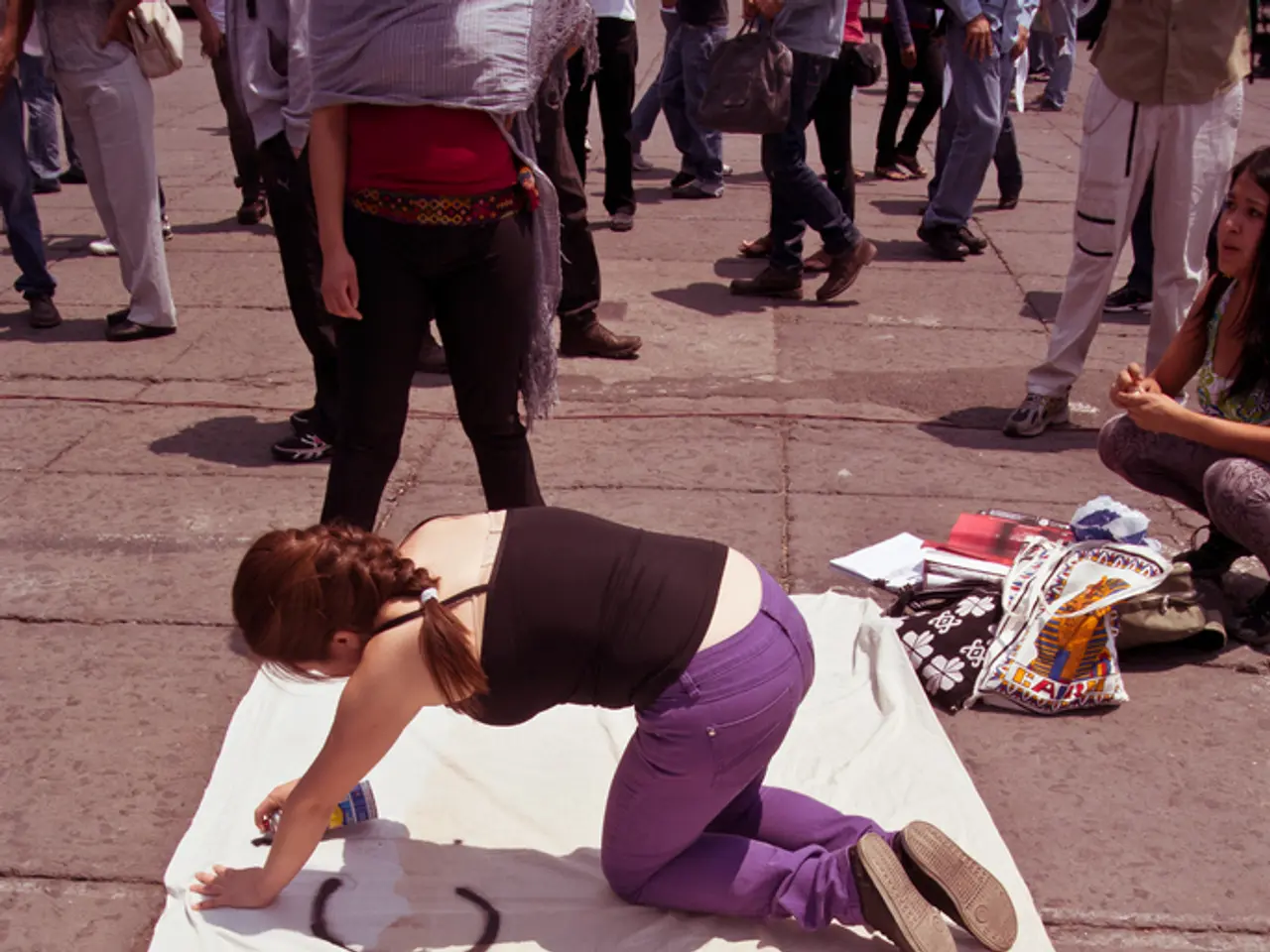Refinishing Floors: Common Misconceptions Explored
In maintaining the cleanliness and longevity of your floors, stripping and waxing are essential practices. This process involves removing old wax layers, cleaning the floor thoroughly, and applying new wax to achieve a shiny, durable finish.
To achieve the best results, follow a careful multi-step process.
- Thoroughly clean the floor before stripping, removing all dirt, debris, and old wax buildup. This preventative measure helps ensure an even finish and bright shine.
- Use an industrial-grade stripper or appropriate wax remover to safely dissolve and lift old wax layers without damaging the floor surface. Be mindful of the floor type; high-speed buffers are suitable for resilient floors like VCT, while engineered wood floors require gentler methods to avoid sanding.
- Rinse or mop the floor well after stripping to remove all residue of the stripper. Allow the floor to completely dry before waxing; any moisture will impair wax adhesion and cause cloudiness or tackiness.
- Apply wax evenly using the grain direction for wood floors, or consistent smooth motions for other floors. Avoid thick coats; multiple thin coats are preferred to prevent tackiness and attracting dirt.
- Allow adequate drying time between coats—rushing can cause sticky surfaces and reduce durability. Use proper drying conditions (warm, dry, ventilated environment).
- Buff the floor gently after waxing with a dry microfiber cloth or buffer to enhance the shine and smooth the wax layer.
Common mistakes to avoid include skipping thorough cleaning before stripping, applying wax too thickly or before previous coats dry, using harsh cleaners or too wet mops after waxing, stripping with abrasive methods inappropriate for the floor type, and ignoring manufacturer instructions on wax and stripper products.
Following these practices ensures a clean, smooth base with well-adhered, even wax layers that produce a shiny, durable finish while minimizing damage and maintenance issues. However, a perfect strip-and-wax won't survive long without daily care.
After the full dry time of the last coat, light foot traffic is allowed. Furniture and mats should wait 24-48 hours if possible, and aggressive cleaning or burnishing should wait 48-72 hours. Applying heavy coats of finish and not allowing enough dry time can lead to scuffs, swirl marks, and premature wear.
Incomplete stripping can lead to problems such as haze, swirl marks, dirt trapped under the finish, or a shine that fades quickly. A practical aftercare routine for floors after stripping and waxing is available in a guide on how to take care of floors after stripping and waxing.
When choosing a finish, consider factors such as foot traffic, burnishing frequency, slip resistance, and frequency of spills. A simple, repeatable process for stripping and waxing includes prepping, stripping, recovering, neutralizing, drying, finishing, curing, and maintaining.
Stripping removes old finish, dirt, and embedded grime to provide a clean, bare surface. Forgetting to neutralize the floor after stripping can cause the finish to haze, powder, or fail to bond. Grime often hides in edges, corners, baseboards, and under fixtures during stripping, and if not properly cleaned, it can cause the new finish to telegraph the dirt.
In commercial spaces, aim for 4-6 thin coats, with 20-40 minutes between coats. In lighter-traffic areas, use 3-4 coats. Dirty tools can trap lint and grit under every coat of finish, leading to poor results. If results are inconsistent, build-up keeps returning, or the shine never looks even, consider hiring professional commercial cleaning services that specialize in floor care.
In conclusion, stripping and waxing your floors is a crucial step in maintaining their cleanliness and longevity. By following the key steps and best practices outlined above, you can ensure a clean, smooth base with well-adhered, even wax layers that produce a shiny, durable finish while minimizing damage and maintenance issues.
- To keep your home looking vibrant and well-maintained, establish a regular home-and-garden routine that includes periodic strip-and-wax sessions for your floors.
- For an inviting living space, consider enhancing your lifestyle by investing in high-quality home-and-garden products and practices that preserve the beauty and integrity of your floors.




